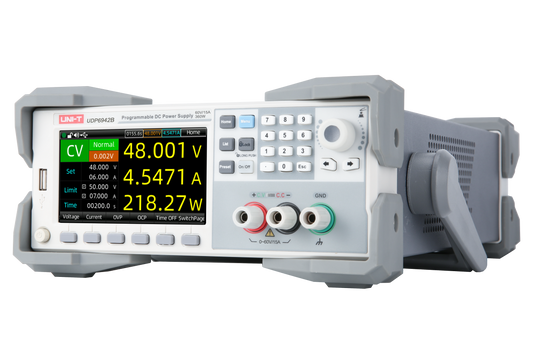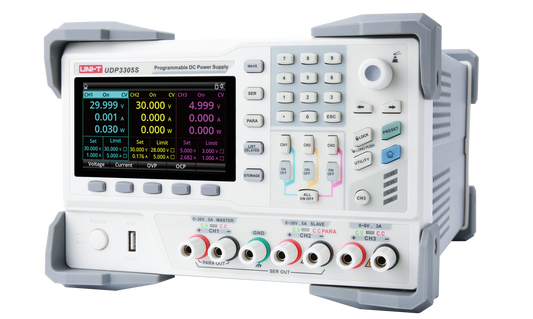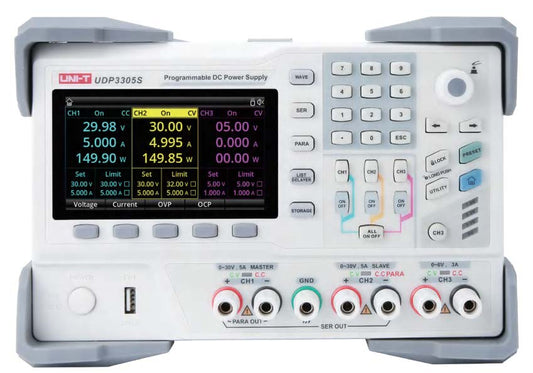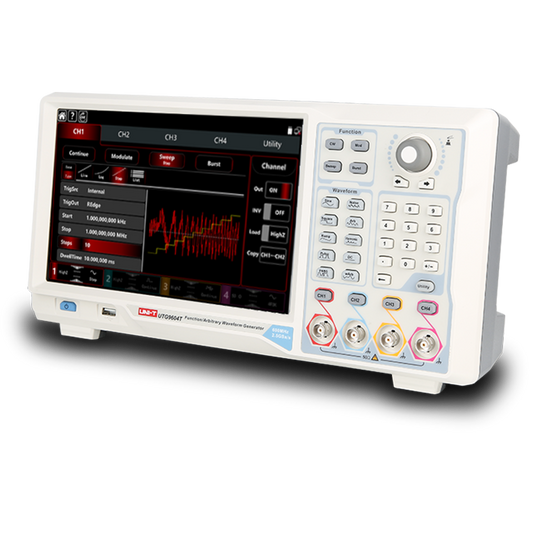Understanding the Differences & Benefits with Linear and Switching DC Power Supplies
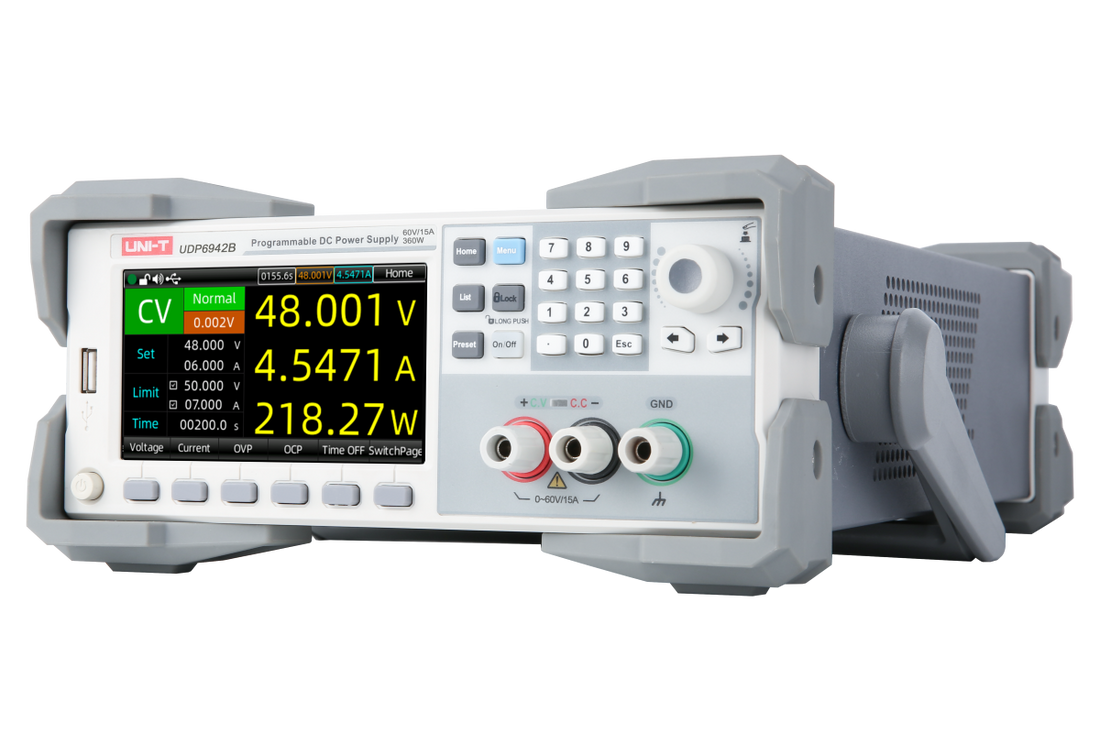
When it comes to choosing a DC power supply, two main types dominate the market: linear and switching. Each has its own unique characteristics, advantages, and disadvantages, making them suitable for different applications. In this article, we will explore the fundamental differences between linear and switching DC power supplies, their respective benefits, and practical applications to help you make an informed decision.
Understanding the Basics
Linear DC Power Supplies

Linear DC power supplies, as an example the UNI-T UDP3305S, convert AC (alternating current) to DC (direct current) using a transformer, rectifier, and regulator. The transformer reduces the voltage, the rectifier converts AC to DC, and the regulator maintains a constant output voltage.
Switching DC Power Supplies

Switching DC power supplies, the UNI-T UDP6953B, also known as switch-mode power supplies (SMPS), use a different approach. They convert AC to DC, then use high frequency switching transistors and components to regulate and maintain the desired output voltage. The high-frequency operation allows for more efficient power conversion.
Key Differences
- Efficiency
- Linear Power Supplies: Typically, less efficient, especially at higher power levels. The excess energy is dissipated as heat, making them less suitable for applications requiring high power.
- Switching Power Supplies: Highly efficient, often achieving 80-90% efficiency or higher. They are more energy-efficient, especially in high-power applications.
- Size and Weight
- Linear Power Supplies: Larger and heavier due to the bulky transformers and heat sinks needed to dissipate heat.
- Switching Power Supplies: Smaller and lighter because they use high-frequency components and smaller transformers, making them more compact.
- Noise and Ripple
- Linear Power Supplies: Produce very low noise and ripple, providing clean and stable output. Ideal for sensitive analog circuits.
- Switching Power Supplies: Can generate higher noise and ripple due to high-frequency switching, which might require additional filtering for noise-sensitive applications.
- Heat Dissipation
- Linear Power Supplies: Generate significant heat, which must be managed with large heat sinks or cooling systems.
- Switching Power Supplies: Generate less heat, reducing the need for extensive cooling solutions.
- Cost
- Linear Power Supplies: Generally, more expensive due to the cost of larger components and heat management systems.
- Switching Power Supplies: Typically, less expensive and more cost-effective for high-power applications due to smaller and more efficient components.
Advantages and Disadvantages
Linear Power Supplies
Advantages:
- Low noise and ripple
- Simple design and easy to use
- Reliable and stable output
Disadvantages:
- Low efficiency
- Large size and weight
- Higher cost for higher power applications
Switching Power Supplies
Advantages:
- High efficiency
- Compact size and lightweight
- Lower cost for high-power applications
Disadvantages:
- Higher noise and ripple
- More complex design
- Potential for electromagnetic interference (EMI)
Practical Applications
Linear Power Supply Applications
Audio Equipment:
High-fidelity audio systems, such as professional audio amplifiers and recording equipment, demand extremely low noise levels to ensure sound quality. Linear power supplies excel in this domain due to their ability to provide a clean and stable DC output with minimal electrical noise. This results in clear, high-quality audio output without the hiss or hum that can be introduced by other types of power supplies.
Laboratory Instruments:
In scientific research and industrial labs, precision is paramount. Instruments like oscilloscopes, signal generators, and spectrum analyzers require stable and precise voltages to function correctly. Linear power supplies are preferred in these environments because they deliver consistent voltage levels with very low ripple, ensuring accurate measurements and reliable operation of sensitive equipment.
Medical Devices:
Medical devices, including diagnostic equipment like MRI machines, CT scanners, and patient monitoring systems, require power supplies that provide clean and uninterrupted power. Linear power supplies are ideal in these applications due to their reliability and minimal noise, which is critical for the accuracy and safety of medical procedures. Any electrical noise could interfere with the operation of these sensitive devices, potentially leading to incorrect diagnoses or treatment.
Switching Power Supply Applications
Computers and Laptops:
Modern computers and laptops are designed to be compact and energy-efficient, making switching power supplies an ideal fit. These power supplies can convert power efficiently and manage different voltage levels required by various components such as CPUs, GPUs, and memory. The high efficiency of switching power supplies helps extend battery life in portable devices and reduces the overall power consumption in desktop computers.
Industrial Equipment:
Switching power supplies are commonly used in industrial settings where high power and efficiency are required. They are suitable for powering machinery, robotic systems, and automated production lines. Their ability to handle large loads while maintaining high efficiency helps in reducing energy costs and improving the overall performance of industrial equipment. Additionally, their compact size allows for easier integration into complex industrial systems.
Telecommunications:
In the telecommunications industry, equipment such as routers, switches, and base stations require efficient power management to handle large volumes of data traffic. Switching power supplies are favored in these applications due to their high efficiency and ability to provide stable power over long periods. They help in reducing the operating costs of telecom networks and ensure reliable performance, which is critical for maintaining uninterrupted communication services.
Conclusion
Choosing between a linear and switching DC power supply depends on the specific requirements of your application. Linear power supplies are best for situations where low noise and stable output are critical, despite their larger size and lower efficiency. On the other hand, switching power supplies are the go-to choice for high-efficiency, compact, and cost-effective solutions, particularly in high-power and space-constrained environments.
By understanding the differences and benefits of each type, you can select the right power supply to meet your needs, ensuring optimal performance and reliability for your electronic devices and systems.
For more information on which Dc power supply is appropriate for you, Linear or Switching, visit Power Supplies – Uni-Trend US


